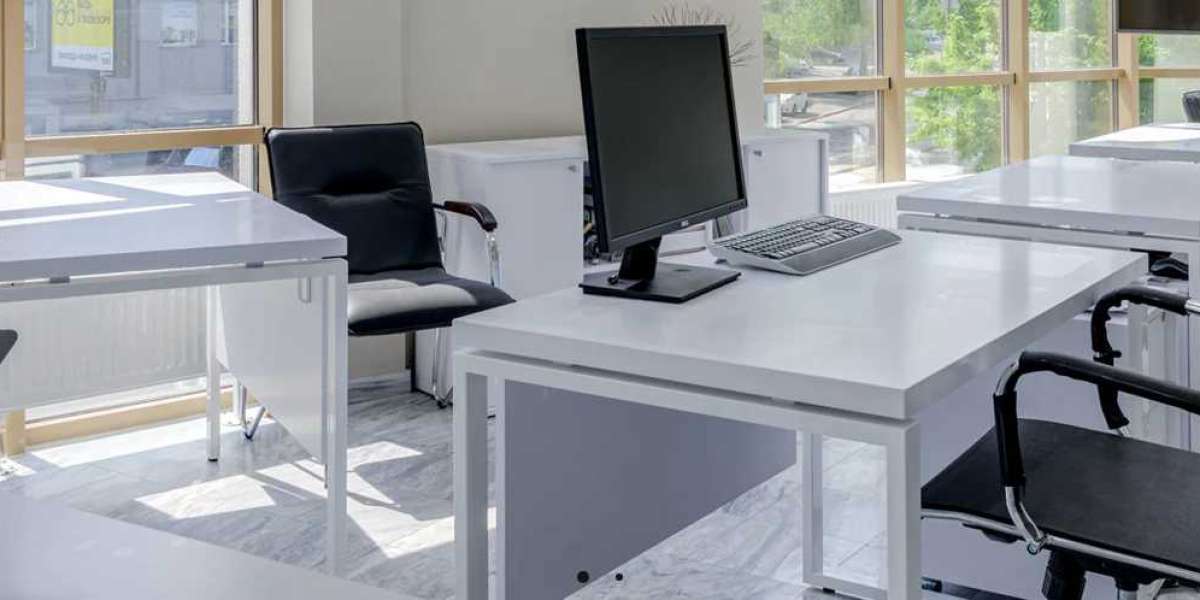Choosing the right material for your office table is crucial for ensuring durability, style, and functionality. The material you select will impact the table's appearance, strength, and maintenance requirements. Here’s a guide to the top materials for office tables, highlighting their advantages and ideal use cases.
1. Wood
- Types: Solid wood (oak, maple, walnut), plywood, MDF (medium-density fiberboard), veneer.
- Advantages: Wood offers timeless elegance and durability. Solid wood is robust and can be refinished if damaged. Veneers and MDF provide a cost-effective alternative with a similar appearance.
- Ideal For: Traditional and classic office settings; can be used for executive desks and home offices.
2. Glass
- Types: Tempered glass, frosted glass, clear glass.
- Advantages: Glass adds a modern and sleek look to any office. Tempered glass is durable and resistant to breakage. Frosted glass can offer a softer look and additional privacy.
- Ideal For: Contemporary and minimalist designs; perfect for modern home offices or professional settings that require a clean aesthetic.
3. Metal
- Types: Steel, aluminum, wrought iron.
- Advantages: Metal is incredibly durable and can support heavy loads. It provides a modern and industrial look and is often used in combination with other materials.
- Ideal For: Industrial and contemporary office designs; great for creating a robust and functional workspace.
4. Laminate
- Types: High-pressure laminate (HPL), low-pressure laminate (LPL).
- Advantages: Laminate surfaces are resistant to scratches, stains, and moisture. They are available in a wide range of colors and patterns, offering flexibility in design.
- Ideal For: Budget-friendly options; suitable for high-traffic areas and functional office spaces.
5. Marble
- Types: Polished marble, honed marble.
- Advantages: Marble provides a luxurious and sophisticated appearance. It’s a natural stone that offers unique veining and patterns.
- Ideal For: High-end office environments or executive suites; requires regular maintenance to keep the surface in top condition.
6. Concrete
- Types: Pre-cast concrete, polished concrete.
- Advantages: Concrete offers a distinctive industrial look and is highly durable. It can be customized with various finishes and colors.
- Ideal For: Modern and industrial office designs; suitable for both home offices and professional spaces with a contemporary aesthetic.
7. Bamboo
- Types: Solid bamboo, bamboo veneer.
- Advantages: Bamboo is an eco-friendly material that offers a unique look with natural textures. It’s durable and sustainable.
- Ideal For: Eco-conscious designs and modern offices that emphasize sustainability.
8. Acrylic
- Types: Clear acrylic, colored acrylic.
- Advantages: Acrylic provides a sleek, modern look and can be shaped into various designs. It’s lightweight and durable.
- Ideal For: Contemporary and modern office designs; works well in spaces where a clean, transparent look is desired.
9. Fabric
- Types: Upholstered fabric, faux leather.
- Advantages: Fabric can add texture and comfort to office tables, often used in combination with other materials. Faux leather provides a stylish look with less maintenance.
- Ideal For: Adding comfort to conference tables or desks; suitable for home offices where a cozy, inviting atmosphere is desired.
10. Resin
- Types: Epoxy resin, polyester resin.
- Advantages: Resin can be molded into various shapes and offers a glossy finish. It’s often used for custom designs and creative applications.
- Ideal For: Unique and artistic office table designs; suitable for modern offices that embrace creativity.
Tips for Choosing the Right Material
- Durability: Consider how much wear and tear the table will experience. Materials like solid wood and metal are ideal for high-traffic areas.
- Maintenance: Some materials, like glass and marble, require regular cleaning and maintenance to keep their appearance. Choose a material that fits your maintenance preferences.
- Style: Match the material with the overall design theme of your office. Wood and metal work well for traditional and industrial styles, while glass and acrylic suit modern aesthetics.
- Functionality: Think about the table’s primary use. For example, laminate and metal might be better suited for functional workspaces, while marble and glass are more decorative.
- Budget: Determine your budget and find materials that fit within it. Laminates and MDF are cost-



